
D7000 DSLR: Venus, Crater Petavius, M98, M100,
NGC4424 SN2012cg, & M107
Posted: 25 May 2012
I had wanted to open the observatory Wednesday, 23 May, but with strong winds (gusts >30mph) and dusty skies, I decided to not open. The winds continued on Thursday, with gusts to 25mph. Since I wanted to at least see and image the ever shrinking crescent of Venus, I decided to open up the observatory even though there was a strong wind blowing. The sky was clear and not as dusty as the previous day. I opened the observatory Thursday, 24 May 2012, at 1808 MST, 95°F. At 1815 MST, viewed Venus, 77X and 206X. Crescent is getting thinner. I then set up for D7000 DSLR imaging at prime focus of the 8" LX200-ACF. Due to the strong winds that were blowing and moving the telescope, the best image was this single frame from an HD video recording, cropped, prime focus + 2X Barlow Lens, 1/400sec, ISO 400:
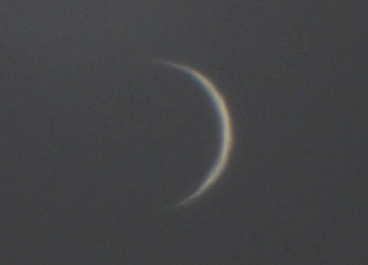
At 1847 MST, 30 minutes before sunset, I began viewing the crescent moon, 77X, 133X, and 267X. I decided I would try some high magnification imaging of the Crater Petavius. This is a slightly cropped image, prime focus + 2X Barlow Lens, "Hat Trick", ISO 200:
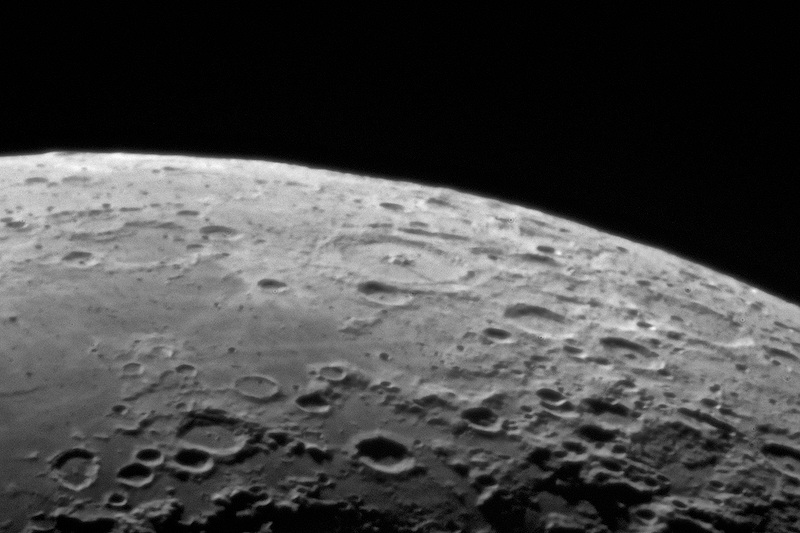
Compare the above image to the image of Crater Petavius taken on 28 December 2011. Lunar Libration is very obvious.
At 1958 MST, with the sun having set about 30 minutes earlier, I captured this lunar image, prime focus, 1/250sec, ISO 500:
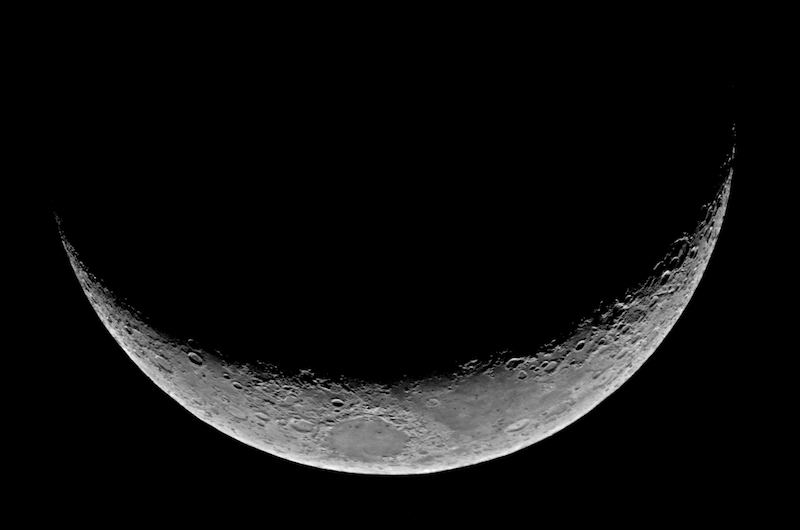
I then did some lunar observing, 206X and 364X. The wind had decreased somewhat and there were some great views of the moon at times.
Next was Mars, 77X, but no details were visible. At 133X, the polar caps were barely visible and there was a hint of a dark area. The view was good at 206X and great at 364X. Then to Saturn, 77X. Four moons were visible: Titan, Tethys, Dione, and Rhea. Really great views at 133X, 206X, and 364X.
At 2033 MST, viewed the galaxy NGC4424. The newly discovered Supernova SN 2012cg was easily seen near the nucleus of the galaxy. I would try to image it later this night.
At 2040 MST, with the wind increasing again, viewed M100 (galaxy), then M98 (galaxy), 77X. I would also image these later, once the moon was lower in the sky, wind permitting. Now that the sky was darker, suspended dust in the air from the winds of the past two days was very evident surrounding distant lights and the moon.
At 2110 MST, I began setting up for D7000 prime focus + Off-Axis Guider imaging. Did a focus test using the star Denebola with the Bahtinov Mask. I then slewed to M98 (galaxy) and did some framing test exposures while looking for a good guide star. Couldn't find one so did some unguided exposures. This is a slightly cropped, unguided, 3 minute, ISO 6400, image:
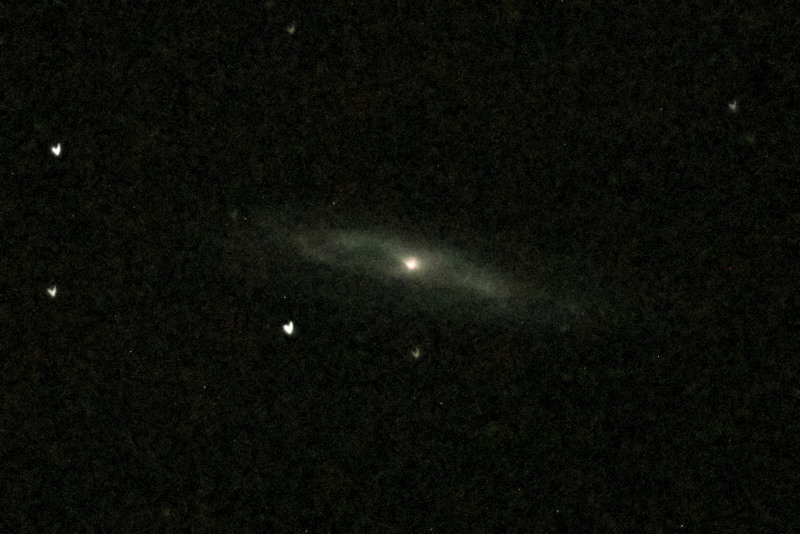
As can be seen, the wind moved the telescope during the exposure.
Next was M100 (galaxy). Found a good guide star. This is a guided 5 minute, ISO 6400, slightly cropped image:
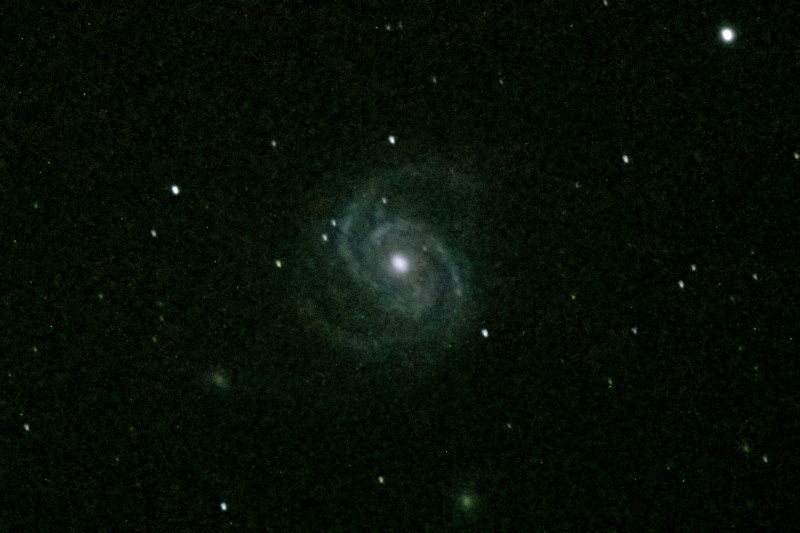
The next target was NGC4424 and the Supernova 2012cg. Again, I was able to find a good guide star. This is a guided 5 minute, ISO 6400, slightly cropped image. The galaxy NGC4417 is at the left. The supernova in NGC4424 (bright star below the galaxy nucleus) is marked.
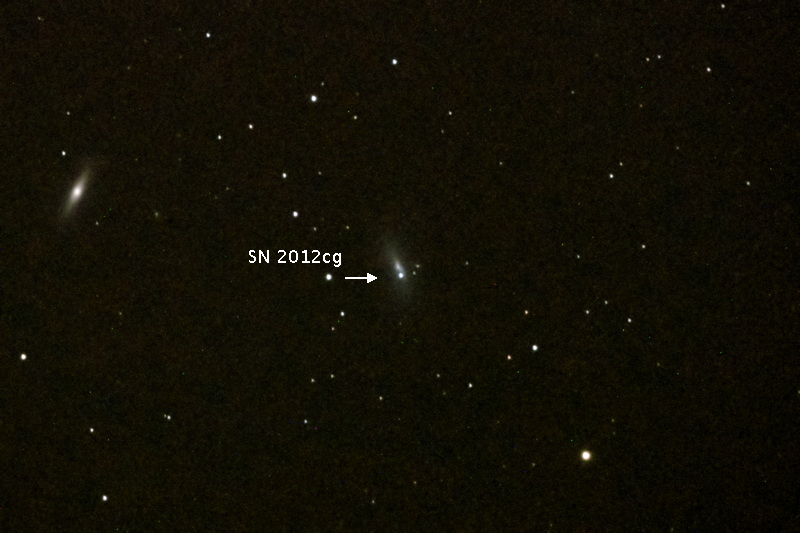
The last imaging target for the night was the globular cluster M107. The wind was calmer now. This is a slightly cropped, unguided 60 second, ISO 6400, image:
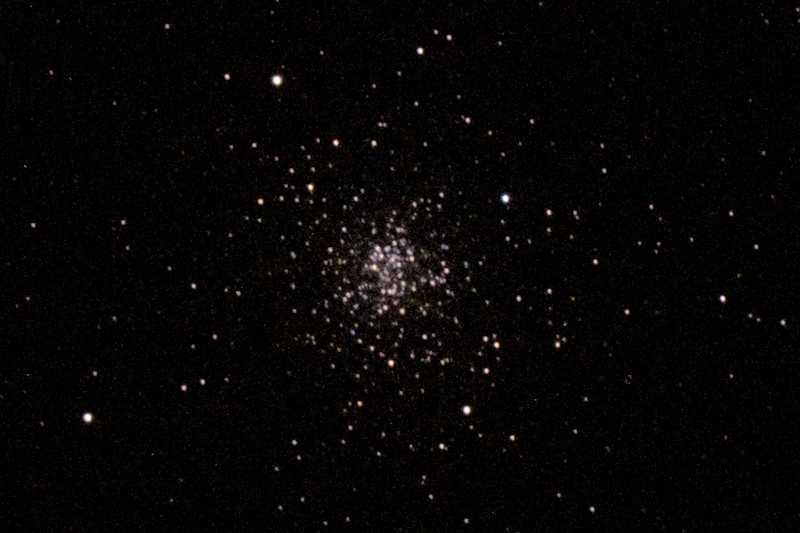
I ended imaging at 2240 MST. The wind had picked up again. I had planned to try to capture a spectrum of the Supernova 2012cg, but will defer that to another night. Viewed the M107 globular cluster, 77X. It was not a very bright cluster but many stars were visible. I then viewed NGC4424 and the supernova. The supernova was clearly seen at 77X, 133X, and even 206X.
I decided to close up for the night due to the strong wind that was still blowing. Closed the observatory at 2311 MST, 73°F.
For some great audio reports on Arizona Astronomy history, listen to these "Arizona Public Media" stories.
Comments are welcome; use the Comments section below, or you can Email Me. Thanks.
Go to the previous report.
Return to the Cassiopeia Observatory Welcome Page.